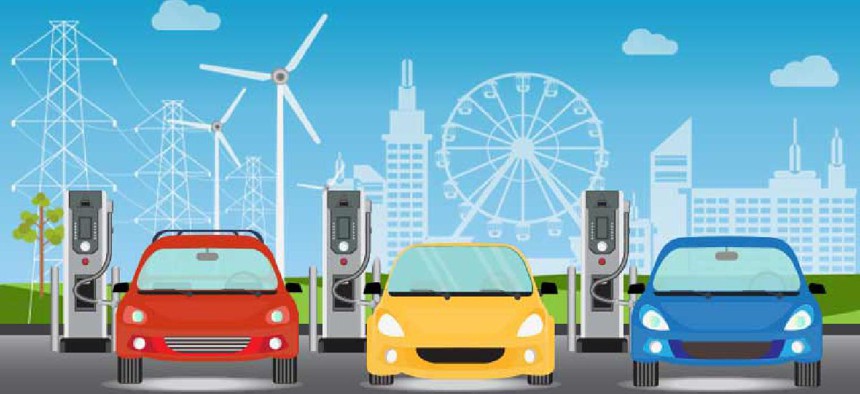Open-source model finds best places for EV charging stations

Researchers at Oak Ridge National Laboratory have developed a modeling tool that helps transportation planners decide where to place electric vehicle charging stations to encourage intercity driving.
As the automobile industry shifts towards the manufacture of electric vehicles, travelers need charging stations along interstate highways so they can easily travel between metropolitan areas. However, the challenges in siting those stations lie in understanding the differences in equipment, the expected use and the optimal number of stations for different settings.
Researchers at Oak Ridge National Laboratory have developed a modeling tool designed to aid infrastructure planners in deciding when and where to place charging stations alongside interstate highways. The free open source software, which is called the Regional Electric Vehicle Infrastructure Strategic Evolution or REVISE-II, will help optimize planning for multistage intercity corridor public charging infrastructure. Strategically placed charging stations will also encourage the adoption of EVs for cross-country use, Oak Ridge officials said.
The software takes a multitude of factors into account, including growth forecasts, the capability of charging technology, driver demographics and intercity travel trends, as it helps planners fill the gaps in existing infrastructure. With this data, the model will be able to determine the ideal locations for the charging stations, the capacity (or number of plugs) required at each station and the subsequent energy and environmental impact, helping planners accommodate for growth as more EVs are adopted and charging requirements change.
According to the Department of Energy, California accounts for one third of the 42,000 charging stations across the country. While President Joe Biden has already spending $15 billion and the goal of reaching half a million charging stations by 2030, experts say that significantly expanding the nationwide network would require coordination from all levels of the government as well as the auto industry, utility companies and retail businesses.
“Providing infrastructure for intercity charging is a necessary step to make EVs fully competitive with conventional vehicles,” Oak Ridge R&D staff member Fei Xie said. “This is a freely available planning tool that takes into account the complexity of intercity travel and helps decision makers more carefully plan these capital-intensive projects to support a nationwide, electrified future.”
NEXT STORY: AI sifts through video data to spot fires





